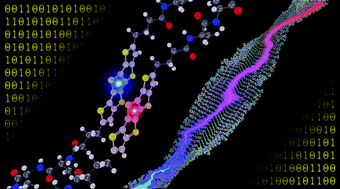Charge transport in highly ordered organic nanofibrils: lessons from modelling†
Abstract
H-Aggregates featuring tight π-stacks of the conjugated heterocyclic cores represent ideal morphologies for 1D organic semiconductors. Such nanofibrils have larger electronic couplings between the adjacent cores compared to the herringbone crystal or amorphous assemblies. In this work, we show that for a set of seven structurally and electronically distinct cores, including quaterthiophene and oligothienoacenes, the co-planar dimer model captures the impact of the monomer's electronic structure on charge transport, but more advanced multiscale modelling, featuring molecular dynamics and kinetic Monte-Carlo simulations, is needed to account for the packing and disorder effects. The differences in the results between these two computational approaches arise from the sensitivity of the electronic coupling strength to the relative alignment of adjacent cores, in particular the long-axis shift between them, imposed by the oligopeptide side chains. Our results demonstrate the dependence of the performance of H-aggregates on the chemical nature of the cores and the presence of the side chains, as well as the limitations in using the simple dimer model for a rapid computational pre-screening of the conjugated cores.


 Please wait while we load your content...
Please wait while we load your content...